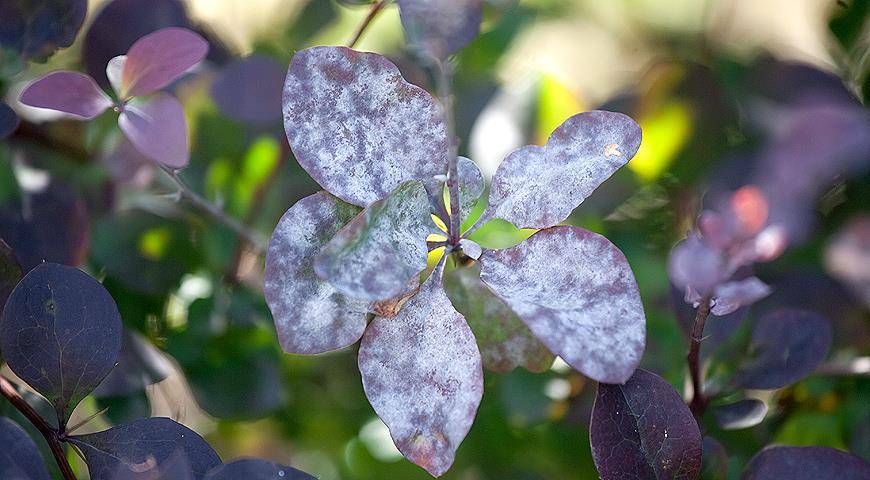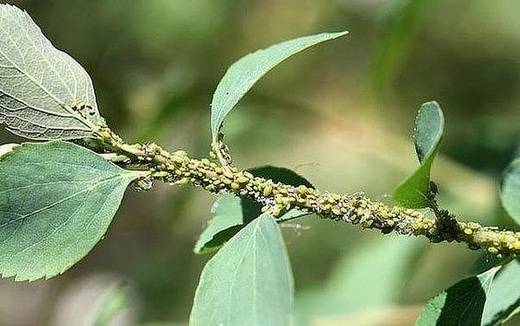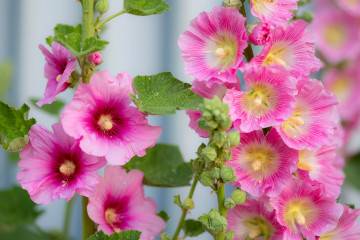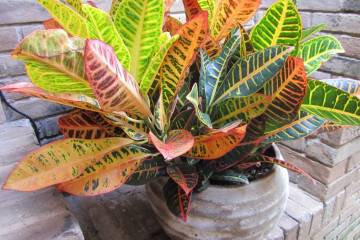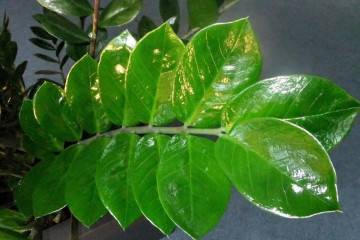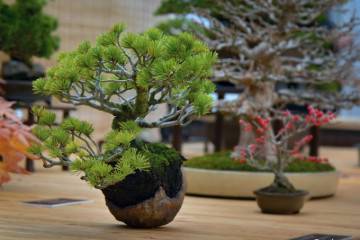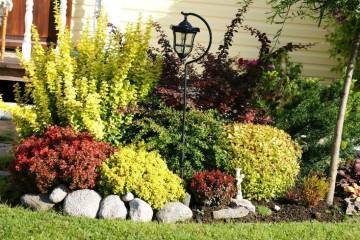Diseases of barberry - causes of occurrence
Content:
When barberry is grown, there is a risk of dangerous diseases. They are reflected not only in the appearance of plants, but also in the quality and volume of the crop. If preventive measures and methods of treatment are applied in a timely manner, then the health of the plant can be reliably protected. To do this, it is important to know what diseases are most likely, and how to effectively deal with them.
Brief description of the plant
Plants of the Barberry family grow almost all over the planet. These are evergreen and semi-evergreen shrubs. One of the famous varieties is the Thunberg barberry.
Jelly and jam are made from barberry berries. They can be dried, in this state they can be stored for no more than two years. In cooking, you can also use barberry leaves, they are used in the preparation of marinades.
The bark is dark gray or brown in color. Shoots grow at an acute angle.
When growing this crop, it is also worth knowing what barberry diseases are and what should be the fight against them.

If the leaves of the barberry curl and dry out, why this happens, you need to decide immediately, otherwise there is a risk of losing the bush
Why diseases can occur
When growing barberry, there is a risk of cancer or fungus. In the first case, the reason is a decrease in the vitality of the plant, which greatly weakens the immune system.
The likelihood of fungal diseases increases with high humidity. First of all, the leaves begin to curl. Therefore, the barberry needs to provide moderate watering.
Improper care
This plant does not need any special care. However, there are rules that must be followed when growing it. In particular, it is necessary to apply top dressing, loosening the soil, pruning, spraying. The last procedure is especially important if the hot summer has come.
Frequent illnesses
When a bush is infected, it is important to determine the presence of the disease at an early stage. To do this, it is necessary to identify the following signs:
- the harvest is much less than usual;
- the growth of the bushes is slow;
- the presence of cobwebs on the leaves;
- the presence of spots or swelling;
- leaves can curl;
- a lot of dead branches;
- cracking of the bark.
If one or more signs from the above list are found, you need to process the bush, take measures for treatment. When the leaves of the barberry curl and dry out, this is especially important, otherwise the plant will wither before our eyes.
Powdery mildew on the leaves
This disease is dangerous only for ornamental varieties. Symptoms of the disease - gradually a white bloom begins to appear on the leaves, the branches dry out, the leaves curl and a large amount of cobwebs appear.
How to get rid of powdery mildew on barberry:
- foliage that has been damaged is removed. It is collected together with the fallen leaves and burned.The bush must be sprayed with special preparations, spraying them on the infected branches. For this purpose, you can use colloidal sulfur, vector or scor;
- if the disease appears every year on the bush, in the fall the bush is sprayed with phytosporin. This will restrain the development of the disease by creating a protective film.
Rust on barberry leaves
Rust on barberry got its name from the fact that the affected plants have numerous orange spots on the leaves. If you look at the back of the leaf, you can find yellow formations there. They are fungal spores.
If a disease is detected, the affected leaves must be removed and burned. After that, to get rid of the disease, treatment is carried out using Bordeaux liquid or fungicides.
Spot on the leaves of barberry
This disease has several types: white, brown, gray and several others. Barberry can be affected by any of these. On a diseased bush, spots appear on the leaves. They can have a different color depending on the type of disease.
After the disease gains strength, the barberry will look like a dried bush. When a disease is detected, fungicides are used. Such drugs can only be used to treat ornamental varieties. If we are talking about fruit bushes of barberry, then, according to the description, they are sprayed with compositions with a high copper content.
Bark necrosis
Sometimes you can see that the bark cracking occurs in the bush. As the disease develops further, the bark begins to fall off the trunk. Fungal spores can be seen in the cracked areas.
To start fighting the disease, areas where spores are found must be removed. As a result, the branches are pruned, leaving a small lower part of the plant with buds and shoots.
The affected branches must be cut off. The places where the cuts were made are treated with garden pitch. The bush must be sprayed with copper sulfate. When spraying, they try to ensure that the solution covers the plant completely. To do this, you must carefully process each leaf or shoot. Thus, the plant can be reanimated.
Drying stems
This is the explanation for why the barberry sheds its leaves in summer. The cause of this disease is a fungal infection. As a result, most of the stems dry out, while the leaves also dry out, and the berries do not grow.
Bacteriosis
This is one of the cancers of the plant. It can be detected by the appearance of a large number of black dots on the leaves. When the disease completely infects the bush, it will manifest itself in the form of the death of entire branches. Clearly visible swellings form on them.
The cause of the disease is the bacterium Pseudomonas, which produces cancer cells. To combat bacteriosis, it is necessary to remove the diseased parts of the plant and burn them.
Barberry cancers
Such diseases arise due to a decrease in the immunity of the plant. As a result, the bark cracks, yellow leaves appear, swellings appear on the stems, the yield becomes noticeably smaller and worse in quality.
To combat these diseases, it is important to remove the affected parts. Then it is necessary to spray with copper sulfate. After that, it is recommended to carry out another treatment using a foundation.
Pests
Insects and caterpillars, feeding on the plant, provoke leaf curling, drying of shoots, and a decrease in yield. If pest control measures are not taken, the plant may die.
Caterpillars
The caterpillars on the barberry devour the leaves. Their appearance is the prerogative of the whitefly, which lays its larvae on the bush. When caterpillars grow out of them, they begin to actively destroy the plant.
If caterpillars are found on barberry, methods of dealing with them should be as follows:
- 30 days before ripening, the fruits are sprayed with 1% chlorophos or decis;
- if the barberry has already been eaten by the caterpillars, the damaged leaves are removed and destroyed, and the remaining ones are treated again with the same preparations.
In addition, fumigation or spraying with an infusion of wormwood will help.
Aphids on barberry
You can determine the presence of these insects by visual inspection - on the infected bushes, the leaves are strewn with them. This is one of the reasons why barberry leaves dry.
The parasites can be seen on the underside of the leaves. They feed on the juice of the foliage, taking away the vitality of the barberry. The result is twisted and dried leaves. If these insects are not dealt with, the plant may die. But what if the barberry dries?
If aphids were found on the bush, it is necessary to spray with special compounds. For this purpose, sulfur-containing solutions can be used. Decoctions made with potatoes, tobacco, or garlic work well. This will prevent the leaves from curling up.
To make a decoction of shag, you need to dissolve half a kilogram of tobacco in 10 liters of water. The resulting mixture must be boiled.
Mites
This insect is able to reproduce very quickly. He feeds on the sap of the plant, depriving him of vitality. As a result, the leaves begin to wilt, and swelling appears on the stems. An adult insect turns orange.
To combat ticks, the use of special preparations is effective. Fitoverm is often used for this purpose. To prepare a solution for 1 liter of water, add an ampoule of the drug. It is also available in powder form, which must be dissolved in water before use.
Preventive measures
It is necessary to determine the presence of the disease at an early stage. For this, a regular visual inspection of the plants must be carried out. This is the only way to prevent the development of many ailments and the appearance of insects.
When the first signs of infection in the bushes are detected, appropriate measures must be taken.
If you control the condition of the barberry bushes and respond in time to the problems that have arisen, then you can increase the immunity of plants and high yields for a long period. Taking preventive measures on a regular basis will reduce the risks of infection or attack by insect pests.

